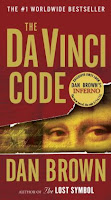In the second book of the Trilogy,
Ken Follett details the lives of the offspring from the first novel. The book is set in the time of the Second
World War, which includes details leading up to and through the conclusion of
the war. He artfully sets events in
motion, and details history by giving a face to the problem. The spread of Fascism is much more tangible
and relatable when we are scared what will happen to Maud and her
children. Once again, Follett does a
wonderful job of teaching history to the reader. He not only provides an interesting story
with very relatable characters, but also one that makes the events of the world
at this point in time easy to grasp.
One of the first events in the book
demonstrates the progressive takeover of the Nazi regime. Ethel and her son Lloyd are visiting Maud and
her family in Germany. During this
visit, the Nazis raid and shut down the local paper where Maud works, and
persecute Robert Von Ulrich and his partner Jörg. The Nazi
regime continues to gain ground and political power, with Adolph Hitler
ultimately leading the country as Dictator.
Through the eyes’ of Maud’s family; we witness Jewish persecution,
family schism due to nationalism, the economic effect of war on the German
people, and many other tough situations.
It was very real and understandable why the characters behaved the way
they did because of Follett’s wonderful writing. In a point I have beaten to death with my
previous review of Fall of Giants, Follett does a terrific job with character
development which fosters the readers’ empathy.
On the English side, the three
families are the Leckwiths, Williams’ and Fitzherberts. The Fitzherberts still languish in luxury,
and Boy Fitzherbert is being groomed as heir to the estate. He is being educated at the best schools, and
is very active politically. This garners
the attention of American Daisy Peshkov, Lev Peshkovs daughter, who is very
attracted to the wealth and power of upper class life. Lloyd Williams is also pursuing his education
in Europe, and later becomes involved in the Spanish Civil War with his cousin
Dave Williams. The accounts from the
Spanish Civil War are some of the most memorable parts of this book. Without revealing any surprises, these events
had me shocked at the injustice and on the edge of my seat in suspense.
I felt that the American families
in this book took a larger role this time around. Gus Dewar, and more notably his son Woody are
major characters. Woody gravitates
towards politics like his father, while younger brother Chuck ultimately joins
the Navy. Follett focuses his attention
on The Great Depression, socioeconomical unrest, and events leading to American
involvement in World War II. It was
interesting to relearn all the events that almost resulted in America entering
the war effort, and how much we tried to avoid it.
As I write this review, I realize
how complex and intertwined the characters of this book are. It would be impossible to describe each
family, each member of the family, their love interests, etc. without
consistently referencing back to previous parts of my review. I don’t consider myself someone who can
easily follow a multitude of characters, as well as their motives. To this note, it is probably the reason I
don’t often gravitate towards this style of writing. In this case, I found that it worked well,
even if I truthfully did not always know who the author was talking about for
several pages. As with Fall of Giants,
this book was a refreshing and not heavy
handed history lesson featuring relatable and well developed
characters. I would highly recommend
this book for those of you who are interested in historical fiction, or anyone
who (like myself) felt as though they had forgotten much of their American
history.
Rating: 4.25 out of 5 Bunsen Burners
Up Next: The Given Day by Dennis Lehane


